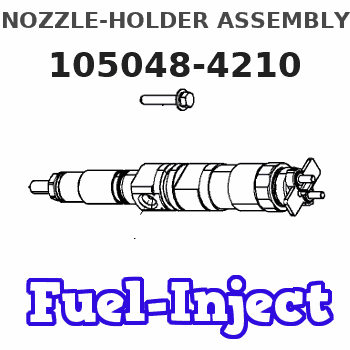Information nozzle-holder assembly
BOSCH
9 430 615 596
9430615596
ZEXEL
105048-4210
1050484210

Rating:
Scheme ###:
| 6. | [1] | 150539-0600 | SHIM D6.2&2.6T1.20 |
| 8. | [1] | 150562-6300 | COMPRESSION SPRING |
| 10. | [1] | 150560-2200 | SLOTTED WASHER |
| 11. | [1] | 150624-1900 | BUSHING |
| 12. | [1] | 150562-6400 | COMPRESSION SPRING |
| 15. | [1] | 150560-1800 | SLOTTED WASHER |
| 16. | [2] | 150508-6100 | BEARING PIN |
| 16. | [2] | 150508-6100 | BEARING PIN |
| 18. | [1] | 150524-6100 | SPACER BUSHING |
| 22. | [1] | 150655-1200 | NOZZLE-RETAINING NUT |
| 800S/1. | [1] | 150538-9800 | SHIM D6.2&2.6T0.40 |
| 800S/1. | [1] | 150538-9900 | SHIM D6.2&2.6T0.50 |
| 800S/1. | [1] | 150539-0000 | SHIM D6.2&2.6T0.52 |
| 800S/1. | [1] | 150539-0100 | SHIM D6.2&2.6T0.54 |
| 800S/1. | [1] | 150539-0200 | SHIM D6.2&2.6T0.56 |
| 800S/1. | [1] | 150539-0300 | SHIM D6.2&2.6T0.58 |
| 800S/1. | [1] | 150539-0400 | SHIM D6.2&2.6T0.60 |
| 800S/1. | [1] | 150539-0500 | SHIM D6.2&2.6T0.70 |
| 801S/1. | [1] | 150591-1000 | SHIM D7.2&3.6T0.10 |
| 801S/1. | [1] | 150591-2000 | SHIM D7.2&3.6T0.20 |
| 801S/1. | [1] | 150591-3000 | SHIM D7.2&3.6T0.30 |
| 801S/1. | [1] | 150591-4000 | SHIM D7.2&3.6T0.40 |
| 801S/1. | [1] | 150591-5000 | SHIM D7.2&3.6T0.50 |
| 801S/1. | [1] | 150591-5100 | SHIM D7.2&3.6T0.51 |
| 801S/1. | [1] | 150591-5200 | SHIM D7.2&3.6T0.52 |
| 801S/1. | [1] | 150591-5300 | SHIM D7.2&3.6T0.53 |
| 801S/1. | [1] | 150591-5400 | SHIM D7.2&3.6T0.54 |
| 801S/1. | [1] | 150591-5500 | SHIM D7.2&3.6T0.55 |
| 801S/1. | [1] | 150591-5600 | SHIM D7.2&3.6T0.56 |
| 801S/1. | [1] | 150591-5700 | SHIM D7.2&3.6T0.57 |
| 801S/1. | [1] | 150591-5800 | SHIM D7.2&3.6T0.58 |
| 801S/1. | [1] | 150591-5900 | SHIM D7.2&3.6T0.59 |
| 802S. | [0] | 150572-0700 | STOP PIN L28.44 |
Include in #2:
104135-1070
as NOZZLE-HOLDER
Cross reference number
Zexel num
Bosch num
Firm num
Name
105048-4210
9 430 615 596
NOZZLE-HOLDER ASSEMBLY
K 53LZ NOZZLE HOLDER NH NH
K 53LZ NOZZLE HOLDER NH NH
Information:
PRESSURIZING THE SYSTEMIf the pressure isn't maintained, overflow loss can occur as cooling system temperature rises. Do not remove the cap while the system is at operating temperature. Check coolant level only when cold.If the system does not hold pressure, find the leak.Carefully inspect the radiator cap, seals, sealing surfaces and the top tank filler neck surface for damage.
RADIATOR CAPTesting The Temperature Gauge
Remember that boiling point temperature and pressure go hand-in-hand and neither one can be tested logically without considering the other. For example, the effect of pressurization and altitude on the boiling point of water is shown in the chart. If overheating and loss of coolant is a problem, a pressure loss in the system could be the cause. If an overheating condition is indicated on the temperature gauge and loss of coolant is not evident, check the accuracy of the temperature gauge. Make this check by installing a thermometer with a suitable bushing into the cylinder head.Start the engine. Partially cover the radiator to reduce air flow and cooling. The reading on the instrument panel gauge should agree with the reading on the thermometer.
Use CAUTION when working around moving parts with the engine running.
CHECKING COOLANT TEMPERATURE WITH THERMOMETERTemperature Regulators
There is a temperature regulator located at the front of each cylinder head.The opening temperature of the regulator (bench test in antmospheric pressure) should be 180 2°F (82 2°C). The regulator should be fully open at approximately 197°F (92°C). 1. Remove the regulator from the housing.2. Submerge the regulator and a thermometer in a pan of water as shown.3. Apply heat to the pan and stir the water to maintain uniformity.4. Observe the opening temperature of the regulator.If the regulator does not operate correctly, install a new one. Cooling System Hoses
Inspect all coolant hoses annually and replace if they show signs of cracking or leaking. Periodically replace all hoses, as it is many times difficult to determine the condition of a water hose by visual inspection and feel. Coolant hoses are expendable items and periodic replacement is considered good maintenance practice.Air, Gases And Steam In The System
Incomplete or improper filling is a major cause of air in the cooling system. Also, leaks in various components such as the aftercooler, and hoses allow air to enter the cooling system, especially on the inlet side of the water pump.Air in the system produces foaming or aeration and affects water pump performance. The air bubbles insulate various parts of the engine from the coolant, and hot spots form. As the air bubbles circulate or break up, coolant contacts the hot surfaces, creating steam. The steam pockets have basically the same effect as air bubbles, accelerating the formation of more steam. Consequently, coolant discharges through the overflow.Exhaust gas leakage into the system causes similar conditions. Exhaust gas can enter through internal cracks or defective cylinder head gaskets.Most of the causes can be checked by a visual inspection, while others require disassembly or a simple test.Air in the cooling system is
Have questions with 105048-4210?
Group cross 105048-4210 ZEXEL
Nissan-Diesel
105048-4210
9 430 615 596
NOZZLE-HOLDER ASSEMBLY
